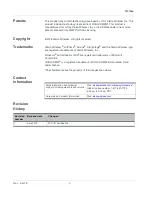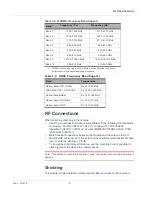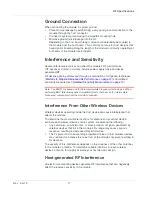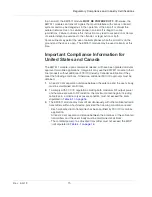
Regulatory Compliance and Industry Certifications
Rev Apr.18
15
In an aircraft, the EM7511 module
MUST BE POWERED OFF
. Otherwise, the
EM7511 module can transmit signals that could interfere with various onboard
systems and may be dangerous to the operation of the aircraft or disrupt the
cellular network. Use of a cellular phone in an aircraft is illegal in some
jurisdictions. Failure to observe this instruction may lead to suspension or denial
of cellular telephone services to the offender, or legal action or both.
Some airlines may permit the use of cellular phones while the aircraft is on the
ground and the door is open. The EM7511 module may be used normally at this
time.
Important Compliance Information for
United States and Canada
The EM7511 module, upon commercial release, will have been granted modular
approval for mobile applications. Integrators may use the EM7511 module in their
final products without additional FCC/IC (Industry Canada) certification if they
meet the following conditions. Otherwise, additional FCC/IC approvals must be
obtained.
1.
At least 20 cm separation distance between the antenna and the user’s body
must be maintained at all times.
2.
To comply with FCC/IC regulations limiting both maximum RF output power
and human exposure to RF radiation, the maximum antenna gain including
cable loss in a mobile-only exposure condition must not exceed the limits
stipulated in
3.
The EM7511 module may transmit simultaneously with other collocated radio
transmitters within a host device, provided the following conditions are met:
·
Each collocated radio transmitter has been certified by FCC/IC for mobile
application.
·
At least 20 cm separation distance between the antennas of the collocated
transmitters and the user’s body must be maintained at all times.
·
The radiated power of a collocated transmitter must not exceed the EIRP
limit stipulated in





































